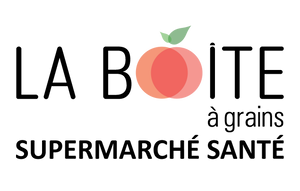Bananas were transported to Africa by Arab traders, and discovered in 1482 by Portuguese explorers who then introduced them to the Americas. However, it was not until the advent of faster transport and storage technologies that they became widely available. Today, bananas are grown in many tropical and subtropical climates. The main exporting countries are Costa Rica, Mexico, Ecuador and Brazil. Bananas are now available all over the world, all year round.
Banana nutrition highlights
Creamy, unctuous and sweet, bananas are enjoyed by everyone, from infancy to maturity. Sports enthusiasts appreciate the potassium content of this energy-rich fruit. Thanks to the 467 mg of potassium and low sodium content (just 1 mg) in a medium-sized banana, this fruit can play a role in preventing high blood pressure and protecting against certain heart conditions. Beyond the cardiovascular benefits, the potassium contained in bananas can also contribute to bone health. It can mitigate the increased loss of calcium due to the high-salt diets generally adopted, which can help to slow the rapid degradation of bones.
Choosing and storing bananas
Bananas with a greener hue will take longer to ripen than those with a more pronounced yellow color. Firm bananas are preferable, but should not be excessively hard. Choose bananas that are shiny and free from bruising or other damage. The ends, both stems and tips, should remain intact. The size of the banana has no influence on its quality, so all you have to do is select the right size for your needs.
Bananas should be left to ripen at room temperature, avoiding excessively hot or cold conditions. Bananas that are not yet ripe should not be refrigerated, as this would irreversibly interrupt the ripening process, even if they are later brought back to room temperature. If you wish to hasten the ripening process, place the bananas in a paper bag or wrap them in newspaper, adding an apple to speed up the process.
Ripe bananas, which will not be eaten in the next few days, can be stored in the refrigerator. Although their skin may blacken, their flesh remains unharmed. Before enjoying chilled bananas, we recommend removing them from the fridge and allowing them to return to room temperature to optimize their flavor.
Tips for preparing bananas
In addition to being eaten raw, bananas lend themselves perfectly to a variety of culinary preparations, fitting easily into a diverse range of recipes, from salads to sweet pastries. A sandwich made with peanut butter and banana slices, topped with maple syrup or honey, is a comfort food particularly appreciated by children and adults alike. Add banana chunks, walnuts and a drizzle of maple syrup to oatmeal or porridge for an enriched taste experience. Turn these tasty fruits into thin slices for fruit salads.
Why choose organic bananas?
Organic bananas are the same price or only slightly more expensive than non-organic bananas. Organic bananas also taste sweeter and creamier. While it's true that the banana's thick skin protects the fruit from pesticides, the soil and air are still exposed to these pesticides, which have an impact on the environment. Organic cultivation uses natural fertilizers, predatory insects, nets and many other alternatives to chemical pesticides.
Recipes with bananas
- Choosing a selection causes the entire page to be updated.


